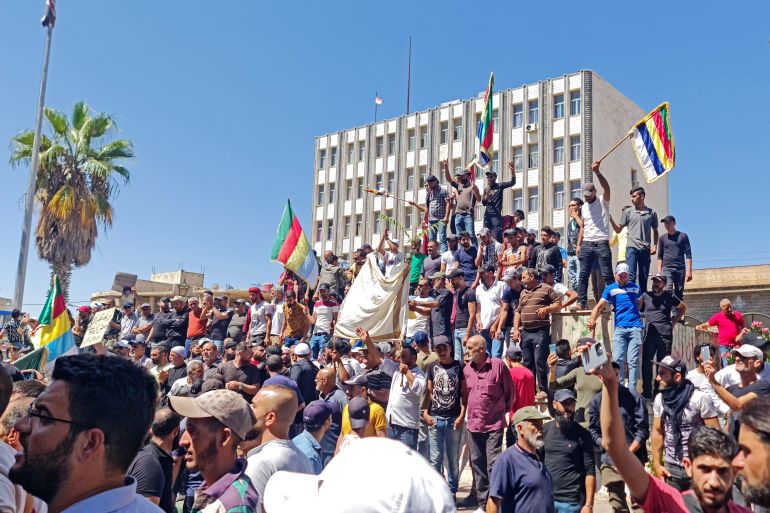In the shadowed streets of southern Syria, a chorus of voices is rising, echoing from a past filled with unrest and seeking a future devoid of oppression. Almost a decade ago, similar voices calling for change were met with violence, plunging the nation into a brutal civil war. Today, those voices have returned, louder and clearer, ringing through the cities of Sweida, Daraa, and even the coastal province of Tartus. They bring forth not only the scars of a past conflict but also the fresh wounds of a nation undergoing a severe economic crisis. Their message is unequivocal: it’s time for change.
It started as murmurs of dissatisfaction in Sweida in August. The removal of fuel subsidies, the dramatic plunge of the Syrian currency – from 47 pounds to the dollar to a record low of 15,500 – and surging inflation all converged, driving the citizens to the streets. But while the flame might have been lit by economic distress, it rapidly ignited long-standing political grievances.
Shouts of “Bashar out! Syria free!” echoed through the city, juxtaposed with posters proclaiming, “Syria is not a farm. We are not sheep.” Such open criticism of the government, particularly in areas under its control, has historically been rare. Yet, as the nation’s economic woes deepened, the discontent became increasingly public.
At the heart of these protests is the emblematic three-star flag of Syria’s 2011 uprising, a symbol of the people’s yearning for autonomy and freedom. Moreover, signs criticizing Iran, which has long supported President Bashar al-Assad, are pervasive. This external influence has become a focal point of contention, further highlighting the rifts between Assad’s regime and many of his citizens.
The recent protests, while reminiscent of those from a decade ago, carry unique nuances. Sweida, home to the majority of Syria’s Druze community, remained neutral during the initial conflicts. Now, the heartland of this religious minority is at the epicenter of the protests. Despite divisions within the Druze leadership regarding the demonstrations, the community’s engagement signals a profound shift in the nation’s political landscape.
Daraa, on the other hand, bears the weight of history. It was here that the 2011 protests began, which were met with a violent government response that catalyzed the ensuing civil war. Today, its streets are once again filled with protesters, evoking memories of a decade past and hopes for a brighter future.
While the protests in the south are overt, other regions under government control, like the coastal province of Tartus, are more discreet in expressing discontent. Residents quietly display postcards proclaiming, “Syria belongs to us, not to the [ruling] Ba’ath party.” Such acts, though subtle, are profound markers of a nation’s collective sentiment.
The Road Ahead for Assad
The confluence of economic hardships and political grievances poses a significant challenge for President Bashar al-Assad. The current wave of protests, while rooted in economic issues, has rapidly evolved into a wider call for political change. With the echoes of 2011 still resonant, Assad faces a delicate balance: addressing the legitimate concerns of his people while navigating the political intricacies of his regime.
The resurgence of these protests suggests that the scars of the past have not faded, and the Syrian people’s yearning for change remains undiminished. The unfolding events will undoubtedly shape the trajectory of Syria’s future and, crucially, the legacy of Assad’s reign.
Image Credit: Handout/Suwayda 24/AFP



















